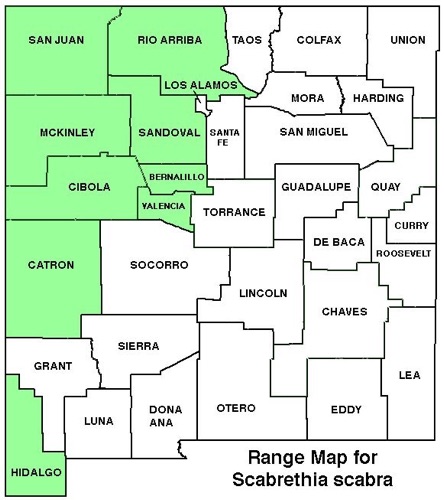WILDFLOWERS OF NEW MEXICO

Dense clumps reach 2-feet tall and wide with dozens of hairy, erect stems tipped with showy, yellow flower heads. Note the narrow, light-green, sandpapery leaves with a prominent white midrib. With three subspecies, the drought-tolerant plant is popular in xericsaping.
FLOWERS: May–August. Flower heads 3–4-inches wide with 10–23 ray flowers, each 5/8–2-inches long (15–50 mm); disk yellow turning brownish. Phyllaries beneath the florets are narrow, well separated, spreading, to 1-inch long (25 mm).
LEAVES: Basal and alternate stem leaves similar size. Blades stalkless (sessile), narrowly oblong to linear, 3–8-inches long (8–20 cm), to 3/4-inch wide (20 mm), surfaces very rough, margins entire.
HABITAT: Sandy, gravelly, gypsum soils, badlands, foothills: high desert brushlands, pinyon-juniper woodlands.
ELEVATION: 5,000–7,600 feet.
RANGE: AZ, CO, NM, UT, WY, MT.
SIMILAR SPECIES: 2 subspecies in NM with slight phyllary differences: subsp. canescens (phyllaries gradually tapering) and subsp. attenuata (phyllaries linear to thread-like). Subspecies scabra (CO, UT, WY) has phyllaries lined with ciliate hairs. Arizona Mule-ears, Wyethia arizonica, in nw NM, has broad, elliptic basal leaves to 12-inches long (30 cm), 3-inches wide (75 mm) and smaller stem leaves, and grows to 9,500 feet.
NM COUNTIES: In the western half of NM in mid-elevation, dry habitats: Bernalillo, Catron, Cibola, Hidalgo, McKinley, Rio Arriba, San Juan, Sandoval, Socorro.









BADLANDS (SANDPAPER) MULE-EARS
SCABRETHIA SCABRA (WYETHIA SCABRA)
Aster Family, Asteraceae
Perennial herb









THE CONTENTS OF THIS WEBSITE ARE COPYRIGHTED AND CANNOT BE USED
WITHOUT PERMISSION OF GEORGE OXFORD MILLER





























































EMAIL ME







